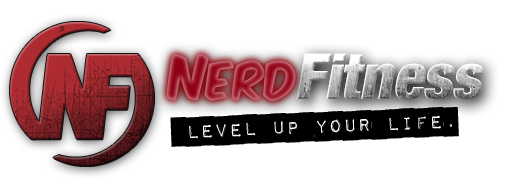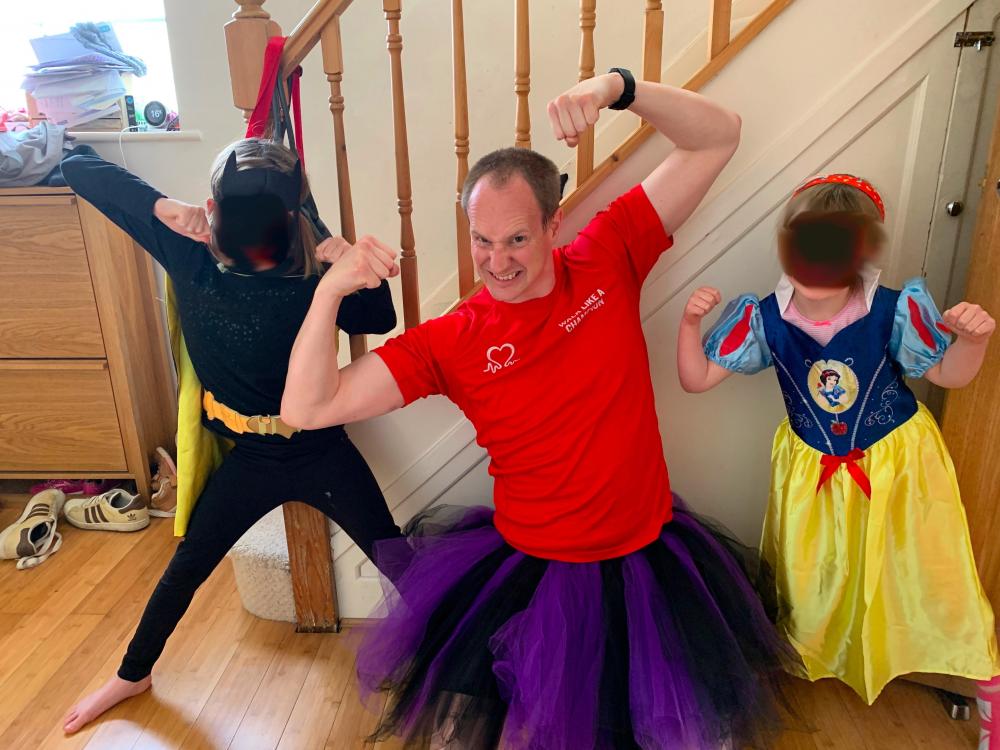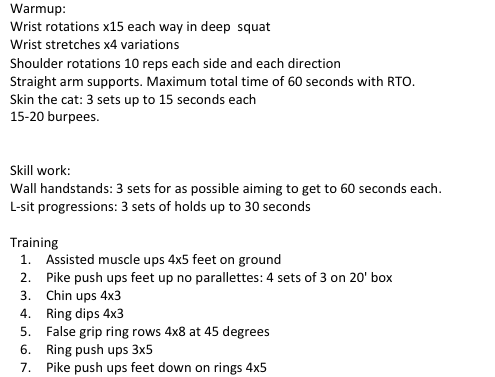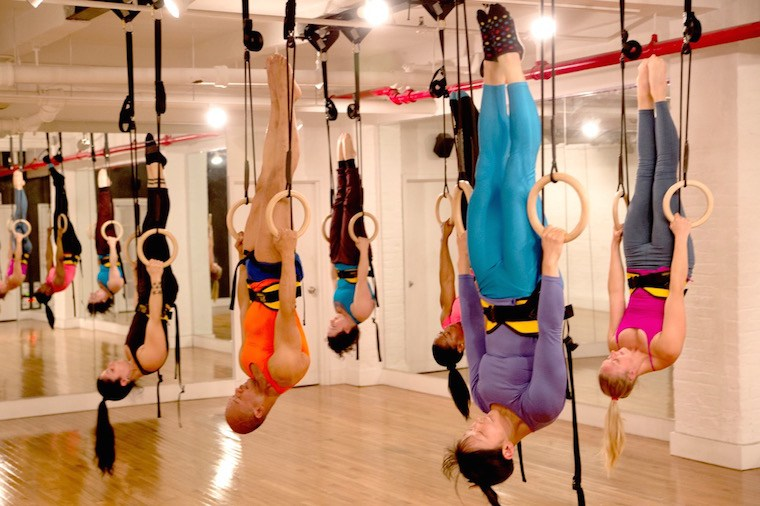-
Posts
976 -
Joined
-
Last visited
Content Type
Profiles
Forums
Events
Articles
Everything posted by Omega v1.1
-
I've heard from native Spanish speakers that learning Japanese is easier than learning English for them because of this! I've only skimmed bits of Tae Kim's guide but from what I've read it's very good so it doesn't surprise me that the explanation is better than in Genki. It seems to explain things in a more logical order whereas Genki feels more like it tries to get you speaking politely to people as fast as possible without worrying itself with whether or not you really understand why the grammar is a certain way. Learn all of the polite forms of the verbs first so you can speak basic (but formal) sentences. Then later learn the dictionary forms as actually they are much more useful to know when progressing with intermediate grammar. The の and は/が thing I think is partially to do with what is considered to be the more 'natural' way of speaking Japanese. The sentences 彼女の髪は長いです and 彼女は髪が長いです mean sort of the same thing but express it in different ways. The first would be translated as 'the hair belonging to her is long' whereas the second is more 'as for her, (her) hair is long'. Sentence 1 would make sense in the context of your listing lots of different body parts belonging to her and describing them (her hair is long, her eyes are blue, her teeth are green), and sentence 2 is more describing the hair of multiple different people (her hair is long, his hair is short). As in Japanese it's standard to not include the subject of the sentence if it's obvious who or what that is from the context, you most likely wouldn't say 彼女の髪は if you were describing various aspects of her as everyone would most likely understand you were talking about her. Instead you'd just describe each body part in turn and not mention her at all (髪が長い。目が青い。歯が緑い。etc) At least, that's my current understanding of it. The more I learn, the more I realise how little I actually know!
- 19 replies
-
- 2
-

-
- bodyweight
- calisthenics
-
(and 5 more)
Tagged with:
-
English (I can;t speak for other romance/ germanic languages but its probably similar) seems to be very *I* or human focused whereas others, like Japanese are very comfortable with non-human-things being the focus of the sentence (possible a Buddhist/ Shinto 'de-emphasis on the ego' sort of thing) so they can be described as having their own qualities rather than what the speaker ascribes to them. I've only just touched on this with my studies but it seems that it's acceptable to talk about your own feelings and thoughts, but when describing someone else, you have to specifically state that you think that they feel a certain way as it is impossible for one person to know how another feels or thinks. You can only report back on what they told you (either directly or through your interpretation of their actions) as it is presumptious and even down-right rude to assume that you can know the mind of another. In the same way that there are 2 different words meaning 'to exist' for living and inanimate objects to differentiate between them, I believe there are different words to be used when describing how you feel and how you think others feel as those are two entirely different concepts.
- 19 replies
-
- 1
-

-
- bodyweight
- calisthenics
-
(and 5 more)
Tagged with:
-
In the past, whenever I've injured myself through exercise it's been because I've tried to do something way beyond my capabilities! It's good to push yourself a bit, because that's where the growth happens, but muscle ups are a little too far from my reach right now so I just need to work harder on getting to that point rather than being an idiot and attempting something I'm not ready for yet. 😃
- 19 replies
-
- 1
-

-
- bodyweight
- calisthenics
-
(and 5 more)
Tagged with:
-
My apologies, I've not updated for a while as life got in the way! We've just had a long Easter Bank holiday weekend so it's been harder to stick to my daily routines so things have slipped a little. I've missed a couple of meditation sessions and I did gardening at the weekend and got a blister on the palm of my hand! Consequently, gym-ring workouts have been put on hold for this week as that's just a recipe for pain! Instead I've been joining my wife and daughters for the daily Joe Wicks workouts (today was fancy dress Friday) and they are more challenging than you'd expect! (I tried my hardest to get them to pose like The Young Bucks). Hopefully by Monday my hand will be in a much better state (I've been mainlining eggs and, in my past experience, that really helps speed up recoveryof open wounds) so I can start my days with the rings again but I may well carry on doing the daily family workouts too as it's fun and every little helps. I've taken my foot of the Japanese Reading pedal the last few days too however I have been working through Naoko Chino's "All about Particles" so that is reading about Japanese I guess. Handstands are going well. I'm now consistently managing a full minute on my first hold and then, after about a minute rest, I'm managing between 40 and 50 seconds. If I can get up to 2x 1 minute handstands, I'll be happy with that.
- 19 replies
-
- 2
-

-
- bodyweight
- calisthenics
-
(and 5 more)
Tagged with:
-
Update from the last few days then. Goal 1: handstands. Been going well although I did end up skipping yesterday as I spent the whole day painting some decking in our garden so I was exhausted by the evening and really didn't feel like I had it in me. However, as I've been creeping closer to multiple 1 minute holds over the last few days, I don't think 1 day off will destroy my progress. Goal 2: Meditation. managed 10 minutes a day of some sort of meditation even if it's just been lying in the dark concentrating on my breathing. It's so much harder than it used to be when I was doing it every day before I stopped which just goes to show why it's important to maintain consistent habits. Goal 3: Back on the rings. Friday was a disaster. I've definitely over programmed doing too much in the warmup and trying too much at the same time. I'm not ready for the assisted muscle-ups yet so I absolutely burned myself out trying them and then had nothing left for the rest of the workout. Whereas before I was managing 4 sets of 3 dips, on Friday I failed to do even one single rep. Having got annoyed first at the muscle ups, then really struggling with the pike pushups and ring chin ups, I'm embarrassed to say I rage quit on the dips and failed to do any of the rest of the workout. However, after giving myself time to calm down and think things through, I made adjustments to my workout and I'm happy to say I got through it all this morning. I've eased back on the warmup, ditched the muscle ups for the time being and given myself a slightly long break between some sets, and this seems to have fixed my earlier issues. It's still a pretty tough workout but at least I can do the reps now. All I need to do is gradually increase the difficulty of each exercise when I feel like it's getting easier, and I think I'll start making some progress. Goal 4: Daily reading. I've now actually made it though the whole short story I was working on so my next plan is to write it out line by line and attempt a literal translation to see how it differ from the one provided by the book. This may well involve me having to research some new bits of grammar that I've not come across yet so potentially that could take longer than just reading the text! If people are interested I may write about my findings on here but I'm well aware that things I get excited about, others may not enjoy with the same nerdish-glee!
- 19 replies
-
- 2
-

-
- bodyweight
- calisthenics
-
(and 5 more)
Tagged with:
-
Ah, that totally makes sense! There is always a logical explanation in 日本語, even if it's not evident at first glance!
- 19 replies
-
- 1
-

-
- bodyweight
- calisthenics
-
(and 5 more)
Tagged with:
-
Thanks! I've made several ill-fated returns in the past and not actually kept on top of my challenges but I'm determined to stick with it this time!
- 19 replies
-
- 2
-

-
- bodyweight
- calisthenics
-
(and 5 more)
Tagged with:
-
Thanks for your post. I'd not heard specifically of the Sapir-Whorf hypothesis however some of my preparatory reading I did on language learning before I started on Japanese did hint at it. Rather than being about linguistic relativity, I did see it mentioned several times that with languages that are quite different from your native tongue (such as Japanese for me) you do have to re-arrange your thought processes to better accommodate the ways that grammar is different. *BORING ELABORATION ON JAPANESE GRAMMAR FOLLOWS- PLEASE IGNORE UNLESS YOU LIKE NERDY OUT ON LANGUAGES* Originally I thought this was to do with how Japanese sentence structure is different from English, (Subject Object Verb in Japanese and Subject Verb Object in English), but it was when I was learning about 好きい that it really hit home. 好きい is often translated as 'to like' but that's not really correct. In English 'to like' is a verb but in Japanese it's an adjective. But textbooks don't really do a good job of explaining it so it's really confusing. The sentence 私はアニメが好きいです would usually be translated as 'I like anime' but that's not technically accurate as in that translation "I" is the subject and "anime" is the object. But 私 (I) has the は topic marker and アニメ has the が subject marker so actually anime is the subject of the sentence rather than the object and there is no object. Which makes no sense from an English perspective as the verb 'to like' needs to have an object- a think that is liked. If the sentence literally translated as "I like anime" then anime would have the を object particle. But it doesn't, it has が. It my textbook, Genki, 好きい is introduced along with other 'i' adjectives because in Japanese 'like' is an adjective rather than a verb but the book just sort of glosses over this massive linguistic difference and I could tell my classmates looked somewhat confused but a no explanation was given, it appears that they just accepted it and we moved on. But my insanely analytical mind just wouldn't allow it to slide. After digging around on the internet (and it took a while to find anything that really explained it) I eventually found a satisfying explanation which was also a great example of how different Japanese and English perspectives are. Sooooo. In Japanese 好きい, 'like' is an adjective rather than a verb because you don't 'like' things, things have the quality of 'likeability' from your perspective. A literal translation of the sentence shouldn't be "I like anime', it's actually "With regards to me, Anime is likeable" but because nobody would ever say it like that in English, we get presented with the first translation in our textbooks, and everybody just gets massively confused and gets told that Japanese grammar is full of exceptions and you just have to remember them. Which is false- Japanese is delightfully logical and consistent when you start approaching it from a non-English Grammar perspective, definitely more so than English! Anyway, that's probably a way more in-depth response to what you were expecting!
- 19 replies
-
- 4
-

-
- bodyweight
- calisthenics
-
(and 5 more)
Tagged with:
-
Here is my first draft for my new workout: However, when I actually attempted it this morning, I made a few revisions. In the warmup I also added some shoulder dislocates with an exercise band, and super set the skin the cats with some leg extensions with the exercise band too as I found in the past these really help with my flexibility for doing L-sits. I also only did 10 burpees- I'll build up to 15/ 20 over time (I hope). Skill work went well so I don't think I need to adjust that. The training part of the workout (and subsequent cool down) takes a bit too long as the whole thing ended up being an hour and 10 minutes long! I'll probably drop everything down to 3 sets rather than 4 and where possible try to add reps. A lot of these I managed quite easily so adding reps needs to happen anyway. There are also currently NO leg exercises so I'm either going to need a separate leg day workout or superset them with the upper body stuff. As for my other goals, I did my handstands, meditation and reading yesterday. I'm gradually working my way through the first story in this: https://www.amazon.co.uk/Short-Stories-Japanese-Penguin-Parallel-ebook/dp/B07TRJBTWM/ref=sr_1_1?dchild=1&keywords=japanese+pengui+parallel&qid=1585731313&sr=8-1-spell Read the first 3 lines of Marakami Haruki's 'Concerning the Sound of a Train Whistle in the Night or On the Efficacy of Fiction'. Already have a few new words to stick in my Anki vocab deck. The story is only 2 pages long so hopefully I should be able to get through the whole thing by the end of the challenge! On a side note, I was interested to find out that 少年 translates to 'youth or young boy' although the kanji are for 'small amount' and 'year'. Therefore young boys are considered as "small of years', which does sort of makes some logical sense and is a good example of why Japanese is such an interesting language and how cultures think differently about things. Young girls are 少女 which means 'small women' so I'm not sure why they have the female kanji but boys have the kanji for year to represent their gender. Also authors are 作家 which is the kanji for "make" and "home". No idea why that is!
- 19 replies
-
- 1
-

-
- bodyweight
- calisthenics
-
(and 5 more)
Tagged with:
-
- 19 replies
-
- 1
-

-
- bodyweight
- calisthenics
-
(and 5 more)
Tagged with:
-
After years in the wilderness (lifting weights in my local gym), undergoing countless horrifying ordeals (queuing for the one decent bench press, getting annoyed as the awesome gymnastics rings setup is used for crossfit classes), as the outside world burns I have returned to my spiritual home: The Guild of the Assassins. Whilst others may be lamenting their lack of a squat rack, the assassins know that all that one requires is the weight of their own body (plus maybe a pull-up bar and a few other bits of equipment) to maintain and even increase their strength. Solitary confinement is all too easy an excuse to allow laziness to take hold and for personal well-being to be discarded so I call upon my fellow assassins to bear witness to my attempts to not just keep in shape but to improve myself and be reborn in the forge of the fires of this insufferable pestilence. As you may be able to tell from my challenge title, in the intervening years I've also been learning 日本語 so for this returning challenge, my goals shall centre around learning from the Japanese chapter of our illustrious order: 忍者 (ninja). I aim to become more balanced, both physically and mentally, return to testing myself on my beloved gymnastic rings, and take my language studies to the next level. Goal 1: Regain my physical balance. At one time I could happily hold a wall handstand for a minute as was even making some progress with supporting myself away from the wall. Recent attempts however have revealed that 40 seconds upside is a challenge for me. My first goal therefore is to practice handstands every day with the aim of being able to consistently hold a 1 minute wall handstand by the end of the challenge. Goal 2: Regain my mental balance. Like with my handstands, at one time I was achieving great success with maintaining a consistent daily mediation routine but this has slipped in the last year. To regain my composure, my second goal is to spend at least 5 minutes a day meditating using the Calm app. The daily 'Calm' meditations are around 10 minutes so I'll try to do those most of the time but if I get pressed for time (unlikely at the moment) I'll make sure I do at least 5 minutes sitting quietly. Goal 3: Back on the rings. Pretty simple really, just create a new workout to be done 3 times a week using my gymnastic rings. I'll look through various sources including the NF rings course and Overcoming Gravity and put together a new routine. Previously, as I would have to be out of the house to got to work by a specific time each day, my workouts had to be kept to under 30 minutes so that i could do everything I needed in the morning. Now that things are much more time flexible, I want to incorporate and proper warm up, skills section, main workout and then decent cool down/ stretching session. My goal is to create this, then test and modify it over the next few weeks so that I have a sustainable workout to see me through however long we are confined inside our houses. Goal 4: Take my studies further by spending 15 minutes a day reading 日本語 text. Along with my anki flashcards and my (now online) tutorials, if I start reading some Japanese every day, I'm sure this will help both my grammar and vocabulary but also improve my reading speed. I was given a variety of dual language texts for Xmas so it's about time I started working through them. Even if I only manage to get through one sentence a day, as long as I feel like I really have a good understanding of it, then I will be satisfied. I also have some traditional folk tales (including some ghost stories) as well as the 4,500 sentences from Tofugu to work through. Those are my goals then. 1. Daily handstands 2. Daily meditiation 3. Create, refine and implement a new rings-based workout 4. Daily reading
- 19 replies
-
- 1
-

-
- bodyweight
- calisthenics
-
(and 5 more)
Tagged with:
-
Etchi's conditioning with conviction
Omega v1.1 replied to Omega v1.1's topic in Daily Battle Logs and Epic Quests
Handstand kick ups: 3x5 hamstring flexibility: 4x5 ring dips: 5, 5, 4, 3.5 pullups: 5, 5, 4 wall handstands: 40, 30 false grip ring rows: 7, 6, 4 close push-ups: 10, 6 L-sit extensions: 5, 5, 5 hip flexor strength: 3x5 -
Etchi's conditioning with conviction
Omega v1.1 replied to Omega v1.1's topic in Daily Battle Logs and Epic Quests
Handstand kick ups: 3x5 Hamstring flexibility: 3x5 ring dips: 3x5 false grip ring rows: 10, 9, 5 l-sit extensions: 2x5 hip flexor strength: 4x5 -
Etchi's conditioning with conviction
Omega v1.1 replied to Omega v1.1's topic in Daily Battle Logs and Epic Quests
Handstand kick ups: 4x5. Better full body tension, quality of kicks getting better hamstring flexibility: 4x5 ring dips: 5, 5, 4, 4. Decrease in reps but better form. Focusing on keeping my shoulders down and back and keeping full body tension pullups: 5, 5, 4 wall handstands (seconds): 40, 30 close hand push-ups: 4, 4, 2 false grip ring rows: 7, 6, 5, 4. Really concentrating on pulling with my back and driving my elbows back. L-sit extensions: 3, 3, 3, 3 -
Etchi's conditioning with conviction
Omega v1.1 replied to Omega v1.1's topic in Daily Battle Logs and Epic Quests
Monday 25 June handstand kick-ups: 4x5. Touched the wall a couple of times so definitely getting better. supersets of ring dips and hamstring flexibility: 4x5 of each pullups: 5, 5, 3 wall handstands (seconds): 40, 31 decline push-ups: 10, 10, 6 false grip ring rows: 4x6 L-sit extensions: 2x3 -
Etchi's conditioning with conviction
Omega v1.1 replied to Omega v1.1's topic in Daily Battle Logs and Epic Quests
Not recorded the last few workouts so I’m just going to update the last 2: friday 22 June wall handstand kick ups: 4x5 attempts hamstring flexibilty with exercise band: 4x5 ring dips: 4x5 chin ups (pause at top): 6, 6, 5, 2 wall handstands (seconds): 40, 40 false grip ring rows: 6, 6, 6 decline push-ups: 10, 10, 9 L-sit extensions: 2, 2, 2, 2 -
Etchi's conditioning with conviction
Omega v1.1 replied to Omega v1.1's topic in Daily Battle Logs and Epic Quests
5 minutes of practice kicking up to wall handstands hip flexor flexibility training: 4x5 per leg ring dips with pause at bottom: 5, 5, 5 Chinups with pause at top: 5, 5, 5 wall handstands (seconds): 40, 40 false grip ring rows: 6, 6, 6, 5 decline push-ups: 10, 10, 9 stag leg raises (per leg): 4, 4 -
Etchi's conditioning with conviction
Omega v1.1 replied to Omega v1.1's topic in Daily Battle Logs and Epic Quests
Ring dips (pause at bottom): 5, 5, 5 chin ups (pause at top): 5, 5, 5 wall handstands (seconds): 40, 40 false grip ring rows: 8, 5, 5, 5 decline push-ups: 10, 10, 8 Stag leg raises (each leg): 3, 3, 3, 3 -
Etchi's conditioning with conviction
Omega v1.1 replied to Omega v1.1's topic in Daily Battle Logs and Epic Quests
Ring dips: 5, 5, 5, 4 chin ups: 5, 5, 5, 5 wall handstands: 40, 30 false grip ring rows: 5, 5, 5, 5 ring push-ups: 5, 5, 5 stag leg raises (each leg): 5, 5 -
Etchi's conditioning with conviction
Omega v1.1 replied to Omega v1.1's topic in Daily Battle Logs and Epic Quests
Ring dips: 5, 5, 5, 5 chinups with pause at top: 5, 5, 5, 4 wall handstands: 40, 30 false grip ring rows (horizontal) 5, 5, 5, 5 ring push-ups: 5, 5, 5 ring knee raises: 10, 10 -
Etchi's conditioning with conviction
Omega v1.1 replied to Omega v1.1's topic in Daily Battle Logs and Epic Quests
5x5 day ring dips, pull-ups, neck bridges, knees to elbow, pushups -
Etchi's conditioning with conviction
Omega v1.1 replied to Omega v1.1's topic in Daily Battle Logs and Epic Quests
Ring dips: 5, 5, 5, 3 chin ups (with pause at top): 5, 5, 5, 3 wall handstands (seconds): 40, 30 false grip ring rows (horizontal): 5, 5, 5 pushups: 16, 14 negative straight arm pulls (tucked and 5 second descent): 1, 1, 1 ring knee raises: 10, 10 -
Etchi's conditioning with conviction
Omega v1.1 replied to Omega v1.1's topic in Daily Battle Logs and Epic Quests
2 circuits of: squats: 20 close squats: 20 split squats (per side): 10 bench assisted pistols (each side): 10 drinking birds (each side): 5 NF Yoga shoulder mobility session










